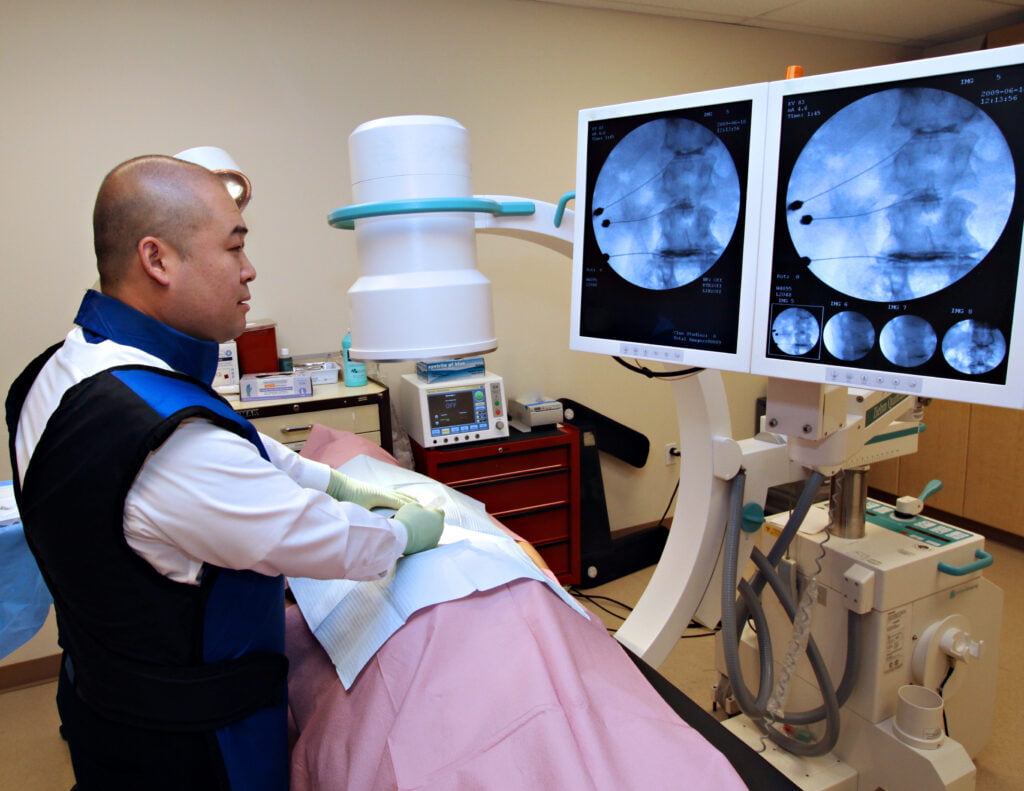
What is an RFA?
Low back pain is a common ailment that affects millions of people around the world. There are several treatment options available for low back pain, including medications, physical therapy, and surgery. In this article we will discuss what a radiofrequency ablation (RFA) is.
Radiofrequency ablation is a medical procedure that uses heat generated by high-frequency electrical currents to destroy sensory nerves that transmit pain signals from the affected area. In the case of low back pain, RFA targets the nerves that supply the facet joints in the spine, which are the small joints that between bones that protect the spinal canal where the spinal cord is.
How is an RFA done?
During the RFA procedure, the patient is given local anesthesia to numb the area around the affected facet joints. A small needle is then inserted into the skin and directed toward the targeted nerve under the guidance of fluoroscopy, a type of X-ray imaging. Once the needle is in place, a small electrode is inserted through the needle and positioned next to the nerve.
The electrode is then heated, using a high-frequency electrical current, which creates a lesion on the nerve. This destroys the nerve’s ability to transmit pain signals, providing pain relief. The entire procedure typically takes about 30-60 minutes, and patients can return home the same day.
One of the advantages of RFA is that it is a minimally invasive procedure, which means that there is no need for general anesthesia or a hospital stay.
How long does an RFA last?
Every patient is different and no one can guarantee any efficacy due to the many factors that can contribute to low back pain. The average would be 3-6 months if effective. However if the patient also has degenerative disc disease or spinal stenosis, the duration is usually shorter.
Risks of RFA
RFA is a safe treatment option for many patients with low back pain. However, as with any medical procedure, there are potential risks and complications, including bleeding, infection, and nerve damage. It is important for patients to discuss the potential benefits and risks of RFA with their healthcare provider to determine if it is the right treatment option for them.
Radiofrequency ablation is a minimally invasive treatment option for patients with low back pain. By targeting the nerves that transmit pain signals from the facet joints in the spine, RFA can provide long-lasting pain relief and improve function for patients. As with any medical procedure, it is important for patients to discuss the potential benefits and risks of RFA with their healthcare provider to determine if it is the right treatment option for them.
What RFA does not do
RFA is a treatment for pain that that originates from the facet joint.
- It does not permanently cure the problem.
- It does not help with pain due to degenerative disc disease, sciatica, or spinal stenosis.











